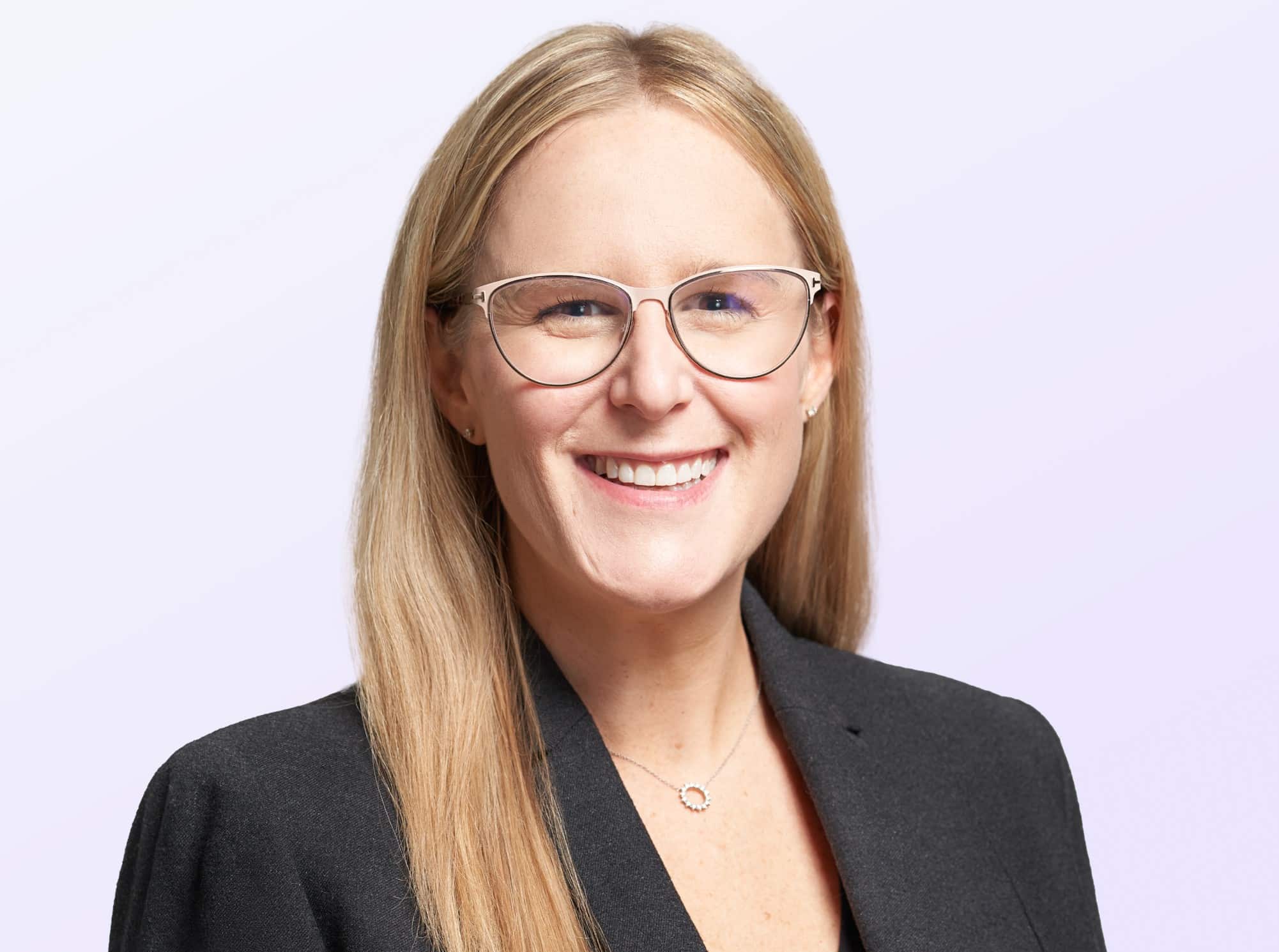Running a startup doesn’t feel too far off from steering a ship. As any good captain knows, it's impossible to predict how a sea voyage will unfold once you embark. Charting a course to your destination isn't always smooth sailing, with choppy waters, changing tides, and ever-shifting winds throwing off even the most carefully laid plans.
As tailwinds give way to headwinds, your navigation plan changes. Likewise, in boom times, startup founders focus on rapidly reaching hockey stick growth, and success means amassing tons of new customers (often with high CAC to match). But when the outlook is murkier and budgets start to get tighter, the focus shifts from developing new features and casting a wide net for new customers, to shoring up existing ones.
“During an economic downturn, the most important focus for a leadership team is protecting and growing the customers you already have,” says Edward Chiu, co-founder and CEO of the customer growth platform Catalyst. “It’s in these times, more than ever, that executives need to understand which customers to prioritize.”
Enter customer success, a startup functional underdog that smart founders have been leaning on from the get-go. When the growth-at-all-costs mentality gives way to efficiency, companies (especially those in the SaaS world) will find that a sturdy and expertly built CS org can help answer the ‘Which customers do I prioritize?’ question — and might just be their secret weapon to staying afloat.
To help, we reached out to some of the best and brightest customer success leaders, operators, and advisors in our orbit for their essential advice on how to build and run a well-oiled customer success machine.
We spoke to over a dozen folks, ranging from executives leading CS divisions at large companies such as Stripe and Twilio Segment to startup founders such as Chiu and advisors and consultants with expert knowledge on the early stages of building a CS org. There’s a treasure trove of wisdom here for startups at any stage — whether you’ve already built out a robust CS team and you want to make sure you’re making the most of it, or if you’re just starting to think about adding this critical cog.
What follows is our guide to the best practices, strategies and tactics for building a sustainable customer success org that increases renewals, prevents churn and grows revenue at a startup.
We’ve broken down the expert advice into four sections to help answer your most burning CS questions and get you closer to your most valuable customers, including finding the right early hire, getting buy-in across the org, knowing when metrics are meaningful and nailing the nitty-gritty of customer calls.
DESIGN A STRONG CUSTOMER SUCCESS TEAM FROM THE GET-GO
When it comes to earlier-stage startups, customer success is typically a function that gets put on the back burner — that is until renewal season comes around or the first customer churns start to roll in.
“Especially in an economically uncertain environment, you cannot waste time just guessing what your customers want,” says Jennifer Chiang, a PM at Seso (and as the author of “The Startup’s Guide to Customer Success,” she literally wrote the book on the topic). “You need to know exactly how your company can address a key pain point. Investing in a customer success team helps to not only ensure that you are understanding your customer needs, but also that you’re bringing valuable feedback to the table that will help pull your company ahead of the pack.”
This all starts with building a CS function into your company org chart. Whether you are ready to take the leap into hiring someone full-time or just want to make sure you are laying the right foundation for when the time comes, use these tips to help make customer success part of your company’s DNA.
1. Watch for these signals as early markers that you’re ready to hire
Before he was investing and advising early-stage companies as a partner here at First Round, Meka Asonye was the VP of Sales and Services at Mixpanel, leading their 100-person global revenue team. Before that, he was Head of Sales and Customer Success for Startups and SMBs at Stripe. (In fact, Asonye has so much knowledge from these past GTM roles that we’ve crowdsourced his top takeaways and tips into its own Review article.)
Through this mix of firsthand experience and keen observations from advising seed-stage companies going through hyperspecific CS growing pains, Asonye has an aerial view of the biggest problems founders face when making their first hire.
“Many founders want to know how baked their processes need to be before making their first hire. Should you have everything figured out and have the CS person execute your plan? Or should you leave the ‘expert’ to figure out what your CS function looks like from the ground up?” he says.
Asonye’s take is that founders should have an idea of what they want their CS function to look like, along with a few attempts at founder-led customer success as well — but nothing too extensive. “If you wait to hire until you have a proven CS playbook, you’ve probably waited too long. Any hire you bring in at this stage should be a builder, filling in the missing bricks in the wall you’ve built.”
To help founders gauge if they are ready for their first dedicated CS hire, Asonye shares a few of the signals he’s seen over and over again that founders should watch out for:
- You’re getting stuck from when the contract is signed to actual adoption.
- Your salespeople are spending too much time supporting and/or expanding usage with existing users vs. seeking out net-new logos.
- Your non-sales team members are spending too much time on CS work, and it’s affecting their ability to do their main jobs.
- Accounts that you expected to quickly expand organically are plateauing or shrinking.
“If you’re feeling any (or all) of these pain points, it’s probably a good sign that you need to bring someone on full-time,” he says.

On the flip side, here are the signals that you’re probably not ready to hire:
- You’re still in "design" partner mode, meaning that your customers aren’t paying for an off-the-shelf product. When customers sign-up and they are giving rapid feedback and getting tons of iteration and rough product edges, you aren’t ready for a CS hire.
- You only have a handful of customers — meaning you don’t have a large enough pool to pattern-match across.
- You have no predictability around what issues your customer base will face. Most of the issues are product ones that need to be solved by your engineering team.
“Imagine you have a recipe and some ingredients in the cupboard. But the recipe is missing a few ingredients that take the dish from good to awesome,” Asonye says. “This is about the same level of preparedness you should have when handing off your customer success work to a full-time hire.
What you don’t want to do is say to a new CS hire, ‘Welcome to my kitchen. I didn’t bother going grocery shopping, and I have no idea what my customers like to eat. Have fun.’ That is a recipe for failure.
2. Be open-minded to a range of different experience levels and backgrounds
When thinking about the seniority and experience level of a first CS hire, Sydney Strader, the VP of Customer Success at Catalyst and former VP of Customer Success at InVision encourages founders to take a gamble on those who might not have as many years stacked on their resume.
“For your first CSM, you don’t need someone with five years of experience,” she says. “What you want is someone who is independent. Not a lone wolf, but someone who can survey the situation and be ready and willing to jump in by themselves. They are the person you need to pull back not push forward.”
It’s not just the skills on a person’s resume that you have to consider when hiring. The foresight of how a CSM or CS leader is going to collaborate with others at the org is another piece of the hiring puzzle, according to Jonathan Hernandez, Principal Customer Success Engineer at Sprig.
“I have often seen teams or companies debate the efficacy of having technical hires within customer success and even sales,” he says.
“Hiring the right person with both technical aptitude and customer empathy is key to having a strong relationship between engineering and customer success teams. Customer success engineers should help hold both sides accountable and also enable engineering teams to identify and resolve deep-rooted technical issues at a faster pace.”
3. Consider customer experience when setting up the account structure
Bhusha Mehta is the Area VP of Global Customer Success at Twilio Segment. She notes that the shared role that the AE, SE and CSM play together is an intricate (yet critical) dance to driving success with new and existing customers. But her advice for founders setting up their CS org is to sweat less over the hierarchy of account structure and focus on how the customer interacts with everyone instead.
“Stay laser-focused on driving the right customer experience by investing in the right account structure,” she says. “Because if incentives are misaligned or rules of engagement are not well defined, it will show up as missed opportunities, and a fragmented and disjointed customer experience. You want a unified approach to success and you want to ensure that customers are building long-term relationships, especially in uncertain environments. A unified approach ensures that the entire GTM team is focused on solving and evolving for customer needs and pain points first, versus solving for business unit-specific goals."
4. Get the idea of a “perfect” org out of your head
At the core, customer success is about ensuring your customer base gets value from the products and services they use. Tim Smith, Head of Global Customer Success at Stripe, wants first-time founders to know that there are many paths they can take to get there.
“There is no single right way to roll out a customer success function despite what you might hear or read,” he says. “You can put renewals in CS or sales depending on the nature and size of your commercial agreements. You can do high-touch or scaled/digital models based on your segmentation, customer complexity, or ACVs. The head of Customer Success can report to the CEO, the CRO, or the COO. There is no one correct way so long as you start with the right principles and keep your team focused on them daily.”
CREATE AN ORG-WIDE CULTURE OF CUSTOMER SUCCESS WITH THESE TOP-DOWN TACTICS
But even with a few early CS hires in place, building a successful customer success org doesn’t just fall on the shoulders of folks with CS in their job title. A common sentiment nearly every expert we spoke with agreed on is that for CS to excel as a business unit, it has to have buy-in from every person at the company.
Melissa Llorente is currently Head of Customer Experience at Elevate Leadership, but has had previous stops as a Director of Customer Success at Gem and spent the bulk of her career running account management and CS teams at Google. She sums this thought up nicely: “Customer success is a whole team effort and a company mindset, so show your customer success team love. They are the glue that holds everything together.”
On a granular level, Llorente elaborates on what buying into customer success looks like in practice for everyone at an org.
“A smart account executive knows that the customer success manager is the key to unlocking critical insights. A smart product manager knows the customer success team can quickly identify themes and patterns that will inform product development. A smart marketer knows that the customer success manager has learned the customer's language and what's on their customer's mind.”

Stripe’s Tim Smith echoes this sentiment:
Customer success isn't an island. Doubling down on CS is great, but you've got to make sure the entire GTM org and tech org believes in it too.
“Your product needs to adapt to the emerging needs of users that CS will often identify. Sales leaders need to see great retention as the path to great expansion. Customers will expand in a tight economy if you're solving the right problems for them in a tough time,” he says.
While CS teams may be furiously nodding their heads up to this point, for others, the role that CS plays inside your org might not feel as deeply integrated. Below you’ll find tactics for founders on how to reiterate the impact of CS across the org.
5. Frame customer success goals for each department
“There are two lists every company is making right now. The list of tools companies are planning to keep because they are instrumental to their operations, and a list of tools to cut because that dollar is better spent as an added buffer for increasing their runway,” says Edward Chiu, the CEO of Catalyst. To make sure your product or service falls in the former, now’s the time for CEOs and founders to highlight at an All-Hands that customer success is a company-wide initiative and not the responsibility of a single department.”
Chiu offers some example questions he’s asked his own team at all-hands meetings to help get discussions around customer success jump-started across the company:
- For engineers: How does the code you’re deploying create a best-in-class customer experience?
- For product managers: How do the features you’re shipping improve existing workflows?
- For all teams: How do you quickly digest the feedback customers are providing?
Not only will customer success be the function that saves your company's valuation, but it will also be the face of economic recovery.
6. Create a steady stream of customer feedback
For tips on what validating CS as a function indirectly can look like in practice, Sydney Strader shares a tactic she uses that reinforces this type of top-down focus on customer satisfaction.
“We have a Slack channel called ‘Bring CS to the Center,’” Strader says. “Anyone and everyone across the company is encouraged to put information, insights and learnings in that channel. It’s the nucleus command center for customer wins, lessons and learnings. Just having a steady drumbeat in that channel is incredibly important,” she says.
Sprig’s Jonathan Hernandez celebrates wins and losses around their goals transparently with the rest of the team in Slack as well. “It's important to celebrate wins and losses around your goals in joint Slack channels where you create a live feed of customer feedback. Think deal win/loss notes, customer net promoter score (NPS), customer product feature requests, etc,” he says. “All of these customer lifecycle points are a great place to collect customer feedback, share it broadly and help align your strategies across teams.”
And in the very earliest days, Hernandez says it’s worthwhile to make a habit of documenting what happened on each customer call.
“More often than data, this type of feedback helps the team learn, grow, and evolve their strategy over time. Sharing publicly the good and the bad also creates a culture of customer first within the company where their needs and priorities take precedence over internal policies or politics.”
7. Don’t limit account management to just revenue leaders
For a more tangible way to embed a culture of CS into the company, Elevate Leadership’s Melissa Llorente also recommends getting all of the leadership team to share some skin in the game. That way, CS work feels more pivotal to moving the meter on company goals and OKRs.
“Assign executive sponsors to your strategic accounts to help build strong multi-threaded relationships at various levels,” she says. “Do not limit sponsorships to the revenue and customer leaders. Including the founders and heads of product and engineering will help the entire company stay connected to your customers.”
Bob Moore, the CEO and co-founder of Crossbeam, has a more contrarian take. He encourages founders to evolve from a renewal process that is completely driven by customer success into one where the product itself becomes a driving force in renewal and upsell conversations.
“In a downturn, the focus on ROI becomes intense and telling a clear ROI story is a key part of any renewal conversation. Today's best companies have thrown out the old ‘ROI Calculator’ spreadsheet approach in favor of building actual features that tell the ROI story right inside of their products,” he says. “To do this right, you need to shift the ‘ROI storytelling’ responsibility away from the sales and success teams and make it a more ingrained part of your product and company DNA. This not only improves your product experience, but ensures that the ROI story is real, tangible, and consistent across customers — a prerequisite to product-market fit.”

8. Invite other employees to sit in on customer success calls.
It’s important to put into perspective that customer success managers (CSMs) are on the front lines of vital customer relationships. Oftentimes, they are the face of your company to your users. This means questions about the product and technical challenges are often thrown their way.
While Sprig’s Jonathan Hernandez is still an advocate of considering technical hires on a CS team, he also notes that all parts of the org need to be briefed and up to speed with specific customer needs so their questions can be answered in a pinch.
“It takes a village to succeed and customer issues often require assistance from other colleagues beyond the customer success team. This is especially true with products that have a lot of technical components under the hood,” he says. “Early engineers should be okay with joining customer calls to help troubleshoot issues or better understand product use cases and even more so when the customer success team is consisting of only one or two people (and might not yet have any technical hires within customer success).
9. Lean into customer success at any stage
Don’t be discouraged that you might have missed the boat on making customer success more ingrained in the company’s DNA. Janna Biagio, VP of Customer Success at Datapeople offers some ways founders can start practicing healthy CS hygiene and surfacing much-needed insights.
“It's never too late to shore up your customer success team,” she says. “The majority of customer LTV is managed by your CS team, so doubling down here means protecting your bottom line. Try hosting a monthly meeting with your CS leader to look at customer health, CSM pulse, churn concer, and expansion opportunities. Your CS team can surface the stories and trends, and with these in mind, you can work together to understand what resources, tools, or support are needed to impact these areas.”
FIND YOUR NORTH STAR METRIC
Metrics are a necessary part of crafting an effective customer success strategy, but follow the wrong north star, and founders and CS leaders might find themselves way off the beaten path.
“The one piece of advice I would share with founders or revenue leaders is to not lose sight of developing a clear understanding of what your customer needs, and continuously evolve your customer success approach to meet those needs,” says Gillian Heltai, Chief Customer Officer at Lattice.

With that in mind, a clear-sighted customer success strategy centers around one or two metrics that represent customer value.
To help decipher which metric might make the most sense for your bespoke customer success dashboard, browse through this section and learn about the metrics others chose to follow.
10. Choose from this menu of metrics and stick with one
First Round partner Meka Asonye offers up a menu of quantitative metrics he’s seen as proven signs of a successful customer success strategy within early-stage teams he advises. “With the caveat that not all of these make sense for every single business, these are the most common ones I see teams using,” he says.
Here are just a handful of strong quantitative metrics founders and CS leaders can point to as their north star:
- Usage. “If your customers aren’t using your product, then you have a problem. It either means that your product isn’t providing enough value for them to want to engage, or there are roadblocks that are preventing them from effectively using the product.”
- Time to value. “While usage is the first step, getting value out of your product should be the next priority. You want your customers to recognize — as quickly as possible — that their lives are massively improved in some way by using your offering. Getting them to that ‘aha’ moment as quickly as possible should be one of your top goals in the early days.”
- Net revenue retention. “This metric encompasses both dollar retention and expansion. Regardless of who you're selling into, you want to be significantly above 100% — especially as an early-stage startup. However, keep in mind that these numbers can get skewed when you're small. For instance, if you have a million dollars in revenue and one of your customers triples in size, your net revenue retention rates can look off the charts. Context matters.”
- Zero metrics. “Engineering teams try to get as close to zero in terms of outages. You can apply this same concept to CS metrics, specifically around churn. When you’re a smaller business with five to 10 customers, churn is not OK and you should aim to be as close to churn zero as possible.”
- Health scores. “Use automated tools to understand the big picture. In my past roles, I always focused on how my customers were using the product. At Stripe, I could see how much revenue they were doing and how often they were logging into their dashboard. At Mixpanel, I could see how many different logins were there and how long their sessions were. All of these signals gave me a sense for the ‘health’ of our customers.”
11. Zero in on retention
Jonathan Sousa is a customer success advisor for startups and the founder of the startup consultancy firm, Portage. He explains why he suggests Net Dollar Retention (a percentage reflecting revenue growth over time, measured by taking starting revenue, adding an expansion, and subtracting churn) as the north star for customer success teams to follow.
“NDR keeps teams focused on what will deliver a successful outcome to their customer and keeps each team member thinking at a strategic level about the inputs (like account planning, product adoption, relationship management, value alignment) that are critical to receiving the ultimate output: retention and growth.”

Stripe’s Tim Smith explains why NDR tells a more holistic story than other popular CS metrics like churn. “Net Dollar Retention is a great construct for seeing the big picture around retention and renewals,” he says. “Churn is only a downside metric with the best possible outcome being zero churn, which will never happen even for the best product due to non-controllable factors. However, net retention is a more extensive metric that lets you include churn and expansion together. This puts your team in a growth mindset rather than focusing on downside potential.”
When operating through a downturn or a recession, Net Dollar Retention can also offer perspective into why customer success is such a necessary function, as they are the keepers of crucial customer relationships.
“It’s important to put strategic plans and processes in place to assess customer health and do all you can to retain – or even expand – customer accounts through a downturn; that way, you’ll emerge on the other side with stronger customer relationships and a stronger business,” says Lattice’s Gillian Heltai.
In times of uncertainty, customer retention, rather than acquisition, should be the primary focus. As adding new customers becomes increasingly challenging, your net dollar retention can save you.
12. Dig deeper into why churn is happening
This is not to say Net Dollar Retention is the only metric that CS teams should follow, or that tracking churn rates should be thrown out the window. Melissa Llorente shares her perspective on how she utilizes downside metrics, such as churn.
“Churn is a lagging indicator — so developing and staying on top of health metrics at all life cycle stages is critical,” Llorente says. “If you’re trying to save a renewal, it means something has gone wrong earlier in the partnership (often with onboarding, delivering proof of value or understanding the clients budgeting cycle).”
Her advice here is not to chase the lowest churn rate possible as a north star, but to use it as a tool in the toolbox for opening up necessary conversations when a customer relationship goes awry.
“Take care in performing your churn analysis as a blameless retrospective as both quantitative and qualitative data is critical for uncovering actionable insights,” she says. “You want the whole (potentially ugly) truth to be revealed so that you can ruthlessly prioritize.”
13. Keep all other quantitative metrics simple.
One simple metric that Rosie Roca, Chief Revenue Officer at Hopin, likes to track on her team is the number of renewed customers. It’s quantitative, yet also helps her paint a bigger picture of how the customers and the product interact together.
“Customer success and renewal starts from the first touchpoint with your product and go-to-market team,” she says. “Founders should operationalize and incentivize acquiring high-quality customers by applying a renewal lens across the customer journey. Continuously investigate and codify the goals, behaviors, and attributes of your most successful renewed customers.”
Roca uses this data to reverse engineer the qualification and sales processes and to set expectations around product fit, ROI, customer investment, and key milestones on an ongoing basis.

Ryan Seams, who runs Customer Success and Services at Mixpanel, also keeps a close eye on renewals, though he likes to think of product adoption as a requirement for strong retention.
“When monitoring account health, it should be simple and straightforward. What product adoption metric proxies for a customer getting value out of your product? Finding this representation of value and focusing the team on driving value to customers who have yet to achieve it is a great way to get the team experimenting and sharing knowledge around what works and what doesn't.”
Product adoption is the main driver of retention. If no one uses the product — why would they renew?
One way that Seams thinks about tracking product adoption is through product evangelists. The more a product has, the more value the team can assume their product provides.
“We talk about this internally as the dreaded customer Slack message sent to the entire company: ‘Does anybody use this?’ Without strong adoption, you will be one of the first tools to go. Find the users who will be advocates for driving product adoption and align your strategies around nurturing these users to drive more value within each account,” he says.
14. Stir in qualitative metrics to identify risk
A general rule of thumb is to have a healthy serving of both qualitative and quantitative metrics. The goal of mixing in both to your customer success strategy is to properly understand the degree to which the customer believes they are receiving value, according to Portage’s Jonathan Sousa. One way to do this is to go beyond looking at usage and adoption metrics as the only view of customer health.
“Run an audit of each customer's expectations and desired outcomes with your product, and gauge the degree to which you're delivering on those expectations, as each customer defines it,” he says. “These inputs can be provided by a CSM, through a conversation with a customer stakeholder, or via a survey. All are qualitative, and all are valuable. These inputs, in addition to quantitative metrics, will help you quickly identify risk spots and areas of opportunity.”
Datapeople’s Janna Biagio gives an example of one such risk spot and opportunity.
“We had one large, strategic customer with abysmal product adoption numbers,” she says. “It was near zero for a majority of the contract length, but my team stayed with the customer, holding monthly meetings where we set clear goals with the customer. Our CSMs kept reiterating the value and partnership we offered. So when the renewal process kicked off, we weren’t worried. Since then, adoption has thankfully picked up quite a bit. Without customer success getting in there and communicating the situation upward, we all would have been a lot more anxious.”
If you have the right team and a blameless environment, your CSMs will be honest with you about how it's going. This is where real value can be delivered, fears get assuaged and foresight is gained.
15. Defining success should be a two-way street with your customers
Founders can be hesitant to ask for direct product feedback (after all, no one wants to be told their baby is ugly). But opening up the space for customers to be frank — warts and all — is key to righting the ship if a customer relationship has gotten off track. Meka Asonye has a simple set of questions he suggests all founders use when they sit down with customers:
- If you look forward to a year from now and you’re really happy, what are you saying about our product?
- How do we help ensure renewing is a no-brainer for you?
“Asking these questions forces your customer to think about the future of your partnership and put into words what their expectations are when it comes to your relationship and product. Try out both and see which one results in the most revealing answers,” Asonye says.
MAKE THE MOST OUT OF CUSTOMER CONVERSATIONS
As all customer success managers know, time with your customers is the most precious part of the job. It’s hard to get, and even harder to make the most of, so this section covers some of the tried-and-true tactics that real customer success leaders have used in their daily customer conversations that they find yield the best results.
16. Block time for customer research
“For the high-touch CSM, one simple tactic is to set a calendar block for one hour per customer per month,” Portage’s Jonathan Sousa says. “This is an opportunity to go heads-down, filling any gaps in your documentation, tightening up your account plan, and focusing deeply on the customer.”
Research here includes:
- Read up on the latest customer news
- Check out their stock price and/or funding updates
- Review their Linkedin page and company values
“Absorb the customer's culture, and understand their business. Then, think through how your product can be helpful to them. These should be inputs to your account plan — how you'll ensure that they're successful, and will continue to grow with you over the years to come,” Sousa says.
17. Get comfy being uncomfortable
“Understanding how to have tough conversations with customers is underrated,” says Seso’s Jennifer Chiang.
“It's common for me to hear folks talk about customer success teams as yes-people, but at the core, that couldn't be farther from the truth. Customer Success Managers strive to be good partners and trusted advisors to their customers' businesses, and that includes having tough conversations about what would be best for the customer long-term. I recommend folks to lean into that because ultimately that will help your company build more trust with your customers in the long run.”

18. Don’t be afraid to go on the offensive
Along a similar vein, great CSMs should have confidence in the relationships they’ve spent so much time cultivating, and shouldn’t be afraid to use that to their advantage.
“Identify customers where you have strong alignment, healthy adoption, and great relationships, and use those assets as an opportunity to lock in revenue and remove future risk while conditions remain in your favor,” Jonathan Sousa says. “Approach these customers and offer to pull forward their renewal with slightly improved pricing in exchange for longer contract term commitments, broader license footprints, and/or co-marketing rights. You'll lock in their business while removing risk during these unsettled market times.”
19. Use customer conversations to perfect the timing of your sale
A more delicate part of the job that customer success demands is finding the perfect moment in time where customers feel a deep sense of trust with your team and are also ready for the upsell. This type of foundation that a CSM builds with their customer can prove to be an incredibly helpful tool when it’s time to talk strategy.
"Understanding where there are opportunities to increase consumption of your product from the healthiest and best-fit ICP customers is critical to shifting the pressure of new business revenue to increasing revenue from existing customers,” Catalyst CEO Edward Chiu says. “Because most businesses are slowing down hiring, it is important to figure out how to engage these customers at the precise moment they are ready to be upsold.
Once startups feel rooted in their customer relationships and can start anticipating their needs, Chiu recommends going one step further and automating this process to never miss out on an opportunity.
“This can be done by creating targeted email campaigns that are based on customer product telemetry and interests. By automating this process, businesses can ensure that they are always reaching the right customers with the right message at the right time."

20. You have tools at your disposal, use them
“As you start to get to year three or four at a startup, customer success takes on more of a scaled approach,” Catalyst’s Sydney Strader says. “This is where you start thinking about scalable solutions that can have lasting engagement with customers. For example, a webinar may be a great forum at this stage,” she says. “At Catalyst, we use a tool called e-webinar, which is on-demand for a customer at any point in time but also allows them to submit questions about the product roadmap that then get funneled back to our team.”
(For a deeper dive into how to scale customer success, check out our podcast episode with Strader here.)
21. Turn negative feedback into actionable insights
The sneaky thing about sitting down with a customer is that CSMs have to brace for the news that a longtime customer might not continue to use the product. “It’s always painful when a customer decides not to renew. But the silver lining is that you can learn from this experience,” First Round Partner Meka Asonye says.
Here are Asonye’s tips on how to make the most of a misstep:
- Categorize every loss. “Specifically, bucket your losses into two categories 1) churn that was in your control and 2) churn that was out of your control. An example of the former would be if the customer you were serving went out of business. However, if your customer is leaving because you had seven outages and your product prevented them from collecting revenue, that’s a problem that should have been (and still needs to be) addressed.”
- Conduct executive exit interviews for EVERY customer above a certain size. “I recommend founders run these interviews themselves. Customers tend to be honest with the founder — especially if you’re not their day-to-day CS contact. Use this time to understand what went wrong, what you could have done better and what you can change moving forward to prevent additional churn. This is a huge learning moment, so take advantage of it.”
Cover image by YAGI Studio / Getty Images.
